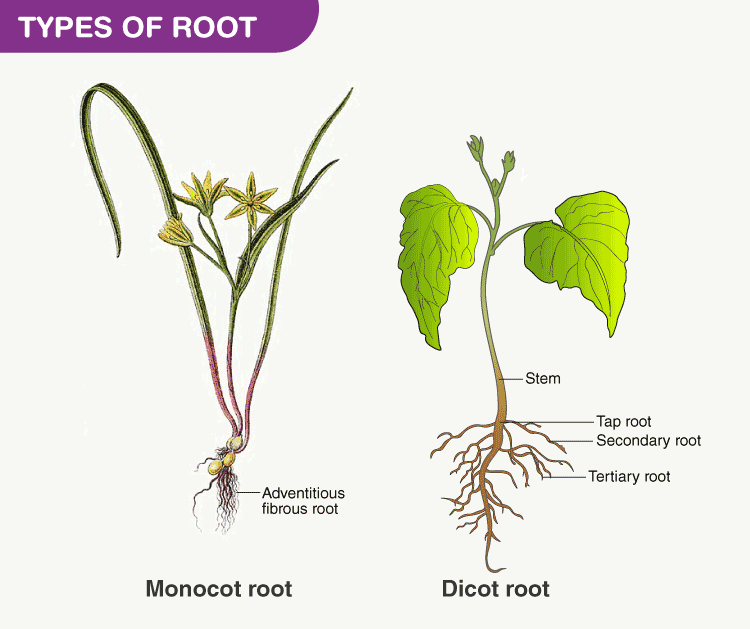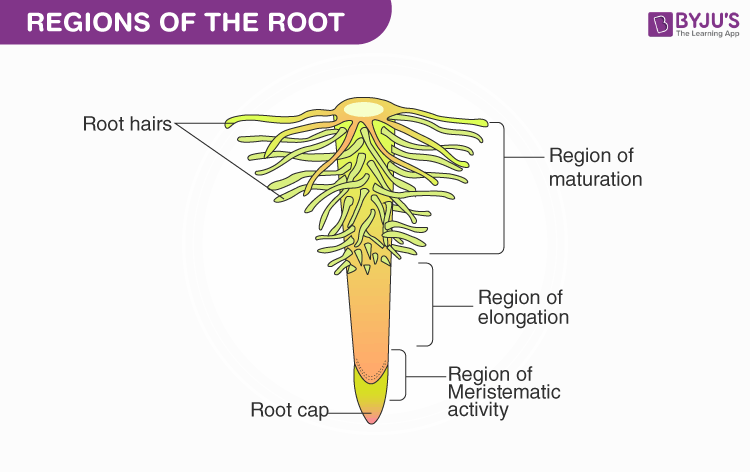Roots are underground structures that aid in anchoring and absorption. The three types of root systems in plants are:
- Fibrous root system
- Adventitious root system
- Tap root system
Fibrous roots are bushy roots seen mostly in monocotyledons like rice and wheat. Taproots are large central roots from which small lateral roots sprout out. These are primarily seen in dicotyledons like carrots and radish. Adventitious roots originate from branches, stems and leaves. Here, let’s see the types of tap roots in plants with diagrams.
Table of Contents
- What are Tap Roots?
- Tap Root Diagram
- Tap Root – Types
- Tap Root – Examples
- Frequently Asked Questions
What are Tap Roots?
Taproots are one of three basic forms of root systems found in plants, the other two being adventitious and fibrous. They develop from a developing embryo’s radicle. As the radicle of many plant species dies soon after development, the taproot eventually transforms into the fibrous root system.
Tap Root Structure
- A taproot system comprises one thick, cylindrical main root known as the primary root. Small roots that branch out from the primary root are termed as secondary and tertiary roots.
- A thin hair-like structure known as a rootlet can be found at the tip of the tertiary root. The rootlets are essential for soil water absorption.
- This type of root system is typically deeply established and difficult to remove.
- Taproots develop in acropetal succession, which means that younger roots grow towards the growing end of the taproot while older roots grow near the base of the stem.
- Any true root will have these four regions – root cap, regions of meristematic activity (cell division), elongation (lengthens the root as they grow) and maturation (root hairs are formed). The maturation region is also known as the region of differentiation as the cells mature into different types of primary tissues.
Functions of Tap Root
The main function of the taproot is to provide deep anchorage. It also aids in the absorption of nutrients and water from the soil. The other three functions of taproots are:
- Storage – These roots have been modified in such a way that they can store food produced by the plants. This food is later used by the plant for nutritional purposes amid adverse environmental circumstances. Example – Turnip.
- Respiration – Plants growing in swamps develop respiratory roots termed pneumatophores. The surface of the root has microscopic pore-like structures called pneumathodes that aid in gas exchange. Example – Black mangrove.
- Nitrogen fixation – Some taproots have nodules that are irregularly inflated. They can pick up free atmospheric nitrogen and convert them into organic compounds with the help of Rhizobium (nitrogen-fixing bacteria). Example – Groundnut.
Also Check: Anatomy of Monocot and Dicot Plants
Tap Root Diagram

Regions of the Root

Tap Root – Types
Tap roots are observed in various shapes. Typical shapes of tap roots are:
- Conical – The primary root begins to expand from the base of the stem and progressively shrinks towards the root’s tip. This sort of root has one swollen end and one tapering end and looks like a cone. Throughout its length, there are several thread-like secondary and tertiary roots. Example – Carrot.
- Napiform – This fleshy root is thick at the stem’s base and resembles a sphere. The taproot swells from the stem’s base and tapers suddenly. Example – Turnip.
- Fusiform – This type of taproot is tapered at both ends and is wider in the middle. It resembles a spindle, thickest in the centre and narrowest at the ends. Example – Radish.
A tuberous root is a fleshy root that has been enlarged and adapted to store food. These are termed the storage taproots and do not take on any certain form or shape.
Tap Root – Examples
Common examples include:
- Turnip
- Parsnip
- Beetroot
- Carrot
- Radish
Taproot weeds:
- Common milkweed
- Dandelion
Taproot trees:
- Pines
- Firs
- Oaks
- Jamun tree
- Elms
Related Topics:
Keep exploring BYJU’S Biology for more such exciting diagram topics.
Recommended Video:
